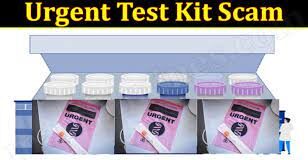Since the future job of Laboratory Medicine is firmly and similarly tested by financial and new innovative tensions, it is fundamental for take an expansive perspective on the discipline and present to the managers and other chiefs the full range of exercises and advantages Laboratory Medicine can give. Specifically, the significance and the genuine effect of Laboratory Medicine must be accomplished by increasing the value of lab tests, addressed by their viability in impacting the administration of patients and related clinical results.
Presentation
Clinical labs address an area of medical care that has consistently gone through significant changes in light of innovative advances and outside monetary pressures.1 In the new past, numerous new demonstrative procedures and lab tests have been presented because of both exploration on the principal pathogenesis of sicknesses and the improvement of new techniques in themselves.
The two Nobel prizes granted individually to the designers of monoclonal antibodies (G. Koehler and C. Milstein, 1984) and the polymerase chain response (K.B. Mullis, 1993) are just the more apparent tips of an immense icy mass of development in the field. Without these strategies, numerous immunoassays and techniques for sub-atomic hereditary testing that are as of now underestimated would basically have been incomprehensible. Then again, lately, huge changes have been made to medical services frameworks and care strategy, generally on the grounds that states have needed to address very mind boggling monetary issues.
Encountering a Paradigm Shift
Response with respect to executives and leaders to diminished accessibility of assets has started on a few fronts, and the financing position of clinical research facilities all through the world is becoming basic. Research facilities are without a doubt an obvious objective for financial limitations and restrictions due to their mechanical characteristics.2 Furthermore, lab testing on clinic inpatients normally is repaid under a symptomatic related gathering (DRG). Under this game plan, the medical clinic is paid a decent rate for a DRG paying little mind to the number of (or what a small number of) tests really are performed. Diminishing research facility costs will along these lines further develop the overall revenue of the hospital.

In clinical research facilities, cost reserve funds have every now and again been acknowledged by combination of lab segments with the making of focal center labs. Further economies of scale have been looked for through regionalisation of lab administrations with the production of individual research centers serving different medical care facilities.4 In certain circumstances, assumed investment funds have likewise been accomplished by the expansion of mechanized pre-scientific example taking care of utilizing mechanical systems.5 Unfortunately, this “innovative” way to deal with bringing down costs per measure has oftentimes been utilized to sabotage the impact of lab experts and to additionally disengage them from clinical problems.1 On the other hand, lab experts are typically prepared to focus on the specialized presentation and on the accomplishment and upkeep of the greatest quality experimental outcomes created in labs. Frequently neglected is the worth of clinical data related with clinical lab testing. Be that as it may, it is plainly adequately not enough to report the right outcomes on the off chance that such information are not utilized for patient consideration. According to the patient’s perspective the transformation of information into valuable data is the main thing that counts.6 The whole picture requires an overall information model that moves from lab information to data, into new information to work with clinical choices via parental figures and, at last, the mediation and outcome.7 This reconciliation and comprehension is the genuine test looked by research facility pathologists and researchers in a time when the quantity of accessible test boundaries have expanded colossally and the accessible assets have fundamentally diminished. Accordingly, the endurance of Laboratory Medicine in such a climate eventually relies upon the capacity to enhance the consideration of patients. The way to liking the significance and the genuine effect of analytic testing must be accomplished assuming that the expense viewpoints are considered in the more extensive generally setting of wellbeing financial aspects and not inside the more blinkered area of unadulterated research facility financial matters where, nearly by definition, each test addresses an expense, and its worth is outside the extent of the lab practice
Estimating the Outcome of Laboratory Practice
How could this reasoning be applied in Laboratory Medicine? Obviously the “raison d’être” of research facilities ought to be surveyed uniquely with regards to the effect of their result on clinical administrations, and different advantages from the lab administration. At the end of the day, clinical labs need to utilize results examination to be cutthroat in a changed medical services scene that is described by monetary issues, and in the utilization of a wide assortment of operations and technologies.9 Laboratory experts should now think all the more all around the world and perform concentrates on that exhibit the effect of research center tests on generally tolerant wellbeing, the expense of patient consideration, and other less unmistakable utilitarian measures, for example, personal satisfaction and patient satisfaction.10 Understanding lab related results empowers the clinical lab to become engaged with institutional cycle improvement, including practice rule advancement, update of lab administrations, and use of patient fulfillment measures inside the organisation.
Appraisal of clinical results corresponding to clinical diagnostics is, notwithstanding, difficult.12 Typical measures in results incorporate dismalness, mortality, personal satisfaction, fulfillment with care, and cost of care, yet there are numerous issues performing result review in Laboratory Medicine, for example, the hole between the result measures and the biochemical testing.1 Frequently, there is a job for substitute markers to be utilized to evaluate the clinical effect of lab practice (Table 1).10 truth be told, it is simpler and speedier to gauge changes in use of assets, for example, the length of clinic stay or the quantity of center visits, than it is to survey the long periods of life acquired. These results may not be conventional, however they are important, and we should begin utilizing them. Perhaps the best illustration of a proxy result is glycated hemoglobin (HbA1c), which can be utilized as a substitute marker of glycaemic control and for evaluating consistence with treatment in diabetic patients.






























